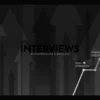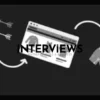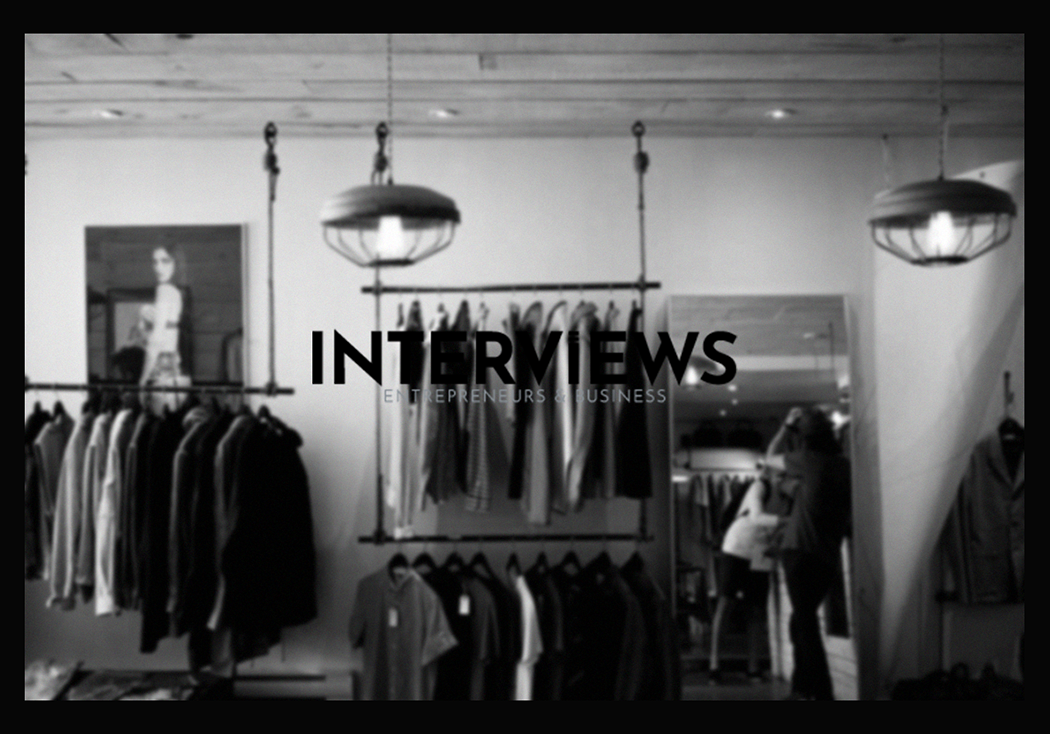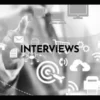Thinking About Launching Your Own Clothing Line? Let’s Talk Money, Honey!
So, you have dreams of fashion empires? That’s great! Before sketching designs or planning runway shows, let’s discuss finances. Starting a clothing line involves more than style. It’s about expenses and revenues.
The Cold, Hard Cash of Starting Up: Online vs. Retail
First, will you conquer the internet from home or open a physical store? This choice dramatically affects your budget.
Launching an Online Clothing Line: Lean and Mean
Going digital first? Smart move for those on a tight budget! Here’s what to expect:
- Website Development & E-commerce Platform: This is your online shop. Costs range from $500 to $5,000. A simple site is cheaper. Better basic designs than elaborate ones initially.
- Inventory (Initial Stock): You need clothes to sell! Budget between $2,000 and $10,000 for stock. The number of pieces and styles impacts this greatly. Starting small is wise.
- Branding and Marketing: Make your presence known! Set aside $500 to $2,000 for branding, social media growth, and promotions. A strong logo is key.
- Photography and Product Styling: Blurry photos won’t sell! Invest $500 to $2,000 for high-quality images. Good lighting and styling attract customers.
- Legal and Business Setup: Don’t ignore this! Set aside $500 to $1,000 for essentials like forming an LLC and permits. Legal troubles can hinder your sales.
And the expenses keep coming… Here’s what to expect regularly:
- Website Hosting and Maintenance: Keeping your site running costs $50 to $200 monthly. Think of it as rent for your online space.
- E-commerce Platform Fees: Platforms need their share. Expect $50 to $100 monthly based on your host.
- Marketing and Advertising: Keeping interest alive costs money. Ads and influencer partnerships can add up fast.
- Inventory Replenishment: Aim to sell out, but then restock! This cost fluctuates based on sales.
- Shipping and Packaging: Getting products to customers incurs costs. Shipping rates depend on volume and speed.
Opening a Large Retail Clothing Line: Go Big or Go Home (and Maybe Broke?)
If a physical store is in your plan, prepare for bigger costs. Here’s a breakdown:
- Rent and Leasehold Improvements: A prime spot costs $20,000 to over $100,000. Location is critical; you can pay dearly for it.
- Inventory (Initial Stock): Fill your racks! Expect $20,000 to $100,000+ for initial stock. A store needs more clothes to attract customers.
- Branding and Marketing: Budget $5,000 to $20,000+ to make an impact. Signs, grand openings, and foot traffic matter.
- Staff Salaries: Staff helps sell! Salaries will range from $20,000 to $50,000+, based on needed help. Happy staff leads to happy customers.
- Equipment and Fixtures: Shelves, hangers, mannequins will cost about $5,000 to $20,000+. A good shopping experience pays off.
- Legal and Business Setup: Budget $1,000 to $5,000+ for permissions. Permits and licenses are vital.
Ongoing costs can be just as significant:
- Rent and Utilities: Monthly expenses vary based on location. A large chunk of budget may vanish here.
- Inventory Replenishment: Keep shelves stocked based on trends. Costs will vary with sales.
- Marketing and Advertising: Local promotions are critical. Marketing is non-stop for physical stores.
- Staff Salaries: Keeping staff paid is an ongoing concern. Salary costs never drop off.
- Insurance and Legal Fees: Protect your business from surprises. Legal costs add up.
- Shipping and Packaging: Many stores ship online orders too. Shipping costs remain relevant.
Don’t Forget These Extra Bites to the Budget Pie
- Production Costs: Making clothes involves expenses. Fabric, labor, and workshop costs add up fast.
- Design and Development: Hiring designers comes at a price. Their talent isn’t free.
- Sourcing: Importing materials? Shipping and import duties can blow your budget unexpectedly.
- Profit Margins: Retail margins usually sit at 40% to 60%. Knowing numbers is essential to profit.
- Business Planning: A solid plan is crucial. Outline your audience, strategies, and finances. Rushing leads to failure.
- LLC: A Limited Liability Company protects your personal fortunes. Consider it seriously.
Starting a Clothing Line When Your Bank Account is Singing the Blues (aka, No Money)
Tight budget? No worries! You can still start your clothing line. Resourcefulness is key.
Phase 1: Brainpower & Legwork (Free!)
- Craft a Business Plan: Your roadmap to fashion success. Detail your target audience and marketing. Planning costs nothing but pays off.
- Market Research Mania: Become a researcher! Identify customers, analyze competitors, spot trends. Knowledge is power; let research guide you.
- Define Your Brand Vibe: Choose logo, colors, style – your brand’s identity must shine. What feelings do you wish to inspire?
Phase 2: Design & Production on a Dime
- Free Design Tools to the Rescue: Use tools like Canva for logos, mockups, graphics. DIY saves cash.
- Dropshipping & Print-on-Demand Magic: No upfront inventory costs with dropshipping. Pay only when you sell!
- DIY & Upcycling Genius: If you can sew, use old clothes to create unique pieces. Sustainable fashion is stylish!
Phase 3: Online Hustle & Marketing Magic (Mostly Free!)
- Social Media Domination: Use Instagram and Facebook for free marketing. Engage audiences and build a following.
- Website Wonders (Low-Cost Options): Use budget-friendly builders like Wix or Squarespace. Create without spending a fortune.
- Content Marketing Creativity: Share fashion tips through blogs or videos. Engaging content draws customers.
- Influencer Love (Micro-Influencers): Collaborate with smaller influencers for promotions. They often have engaged followers and cost less.
- Free Advertising Fun: Use community networking for promotion. Every saved penny can fund better materials later!
Phase 4: Sales & Happy Customers (Essential for Success!)
- Online Storefront Setup: Use platforms like Shopify or Etsy to get started. User-friendly options make selling easy.
- Customer Service Superstars: Excellent service builds loyalty. Respond promptly and go beyond expectations.
- Feedback Fanatic: Check what’s working. Gather feedback, listen, and improve based on customer insights.
Phase 5: Funding & Legal (When You’re Ready to Level Up)
- Crowdfunding Campaigns: Use platforms like Kickstarter to finance your dreams. Pre-orders can boost excitement.
- Friends & Family Bank: Ask loved ones for investment support. Maintain relationships through transparency.
- Small Business Loans (Down the Line): Look into loans when growth is evident. Banks prefer proven concepts.
- LLC (Later On): As you expand, consider forming an LLC. It’s essential for protection and respectability.
Profitability & Avoiding Fashion Flops
Let’s examine profitability. Avoid losing everything through missteps in fashion finance. Margins persist in the clothing industry.
Retail margins range from 40% to 60%. Yet, many fail. Why do they crash?
Reasons Why Clothing Lines Fail
- Market Research Fail: Launching products nobody wants leads to disaster.
- Quality Loss: Cheap clothes mean low reputation. Negative reviews deeply hurt brands.
- Cost Underestimation: Hidden costs derail budgets. Pay close attention; they add up quickly.
- Marketing Failures: Great clothes, no one knows about them. Marketing amplifies your voice.
- Ignoring Feedback: Customers offer free advice. Ignoring them is a lost chance to connect.
- Poor Planning: Scaling chaos and inventory nightmares. Prepare for growth to avoid crushing disappointments.
- Cash Flow Issues: Money flows in and out – balance is vital. Cash flow sustains business.
- Lack of Market Need: Products with no demand become just clothing.
Pathways to Success
- Brand Identity: A strong brand connects with customers. Understand who you are and promote that clearly!
- Market Trend Awareness: Fashion changes. Adapt or become obsolete. Keep pace with trends.
- Audience Insights: Fully understand your customers. Speak their language and solve their needs.
- Growth Planning: Create a scaling plan. Be ready from the start for business growth.
- Cash Flow Management: Monitor finances closely. Know your numbers and control expenses.
Navigating Legal Choices: LLCs, Trademarks, and Permits
Legal issues are vital for brand protection.
LLC: Your Business Shield
Benefits of LLCs
- Liability Protection: An LLC protects your personal assets. It keeps your home and savings safe.
- Credibility: An LLC gives your business weight with customers and partners. Boost your credibility.
- Financial Separation: Keep personal and business finances apart. Avoid accounting complexities.
- Tax Benefits: An LLC may offer tax advantages based on structure. Explore potential savings!
- Ease of Operations: Opening bank accounts and obtaining loans becomes simpler with an LLC.
When LLCs Might Be Unnecessary
- Small, Low-Risk Ventures: For tiny clothing lines, a sole proprietorship can suffice until growth.
- Start Small: Begin without an LLC and assess your business before forming one later.
Steps to Form an LLC
- Name Choice: Select a unique name that resonates. Ensure it’s available.
- Registration: File necessary documents with your state’s Secretary of State.
- EIN Registration: Get an Employer Identification Number from the IRS.
- Creating an Operating Agreement: Document your LLC’s rules and structure clearly.
- Business Account Setup: Open a separate business bank account for clarity.
Trademark Protection
Protect your brand name and logo by trademarking. It deters imitation.
Licenses and Permits
You may require proper licenses and permits depending on your location. Don’t ignore these; legal troubles aren’t fun.
Steps to Launch a Clothing Line
Ready to start? Follow these essential steps for a clothing business.
Step 1: Business Plan
- Niche Focus: What clothing style? Specialize to dominate the market.
- Target Audience: Who will wear your clothes? Identify your customers clearly.
- Market Research: Analyze competitors. Spot potential gaps for your brand.
- Business Model: Will you sell online, in-store, or both? Choose wisely.
- Financial Blueprint: Plan startup costs and sales forecasts carefully.
- Marketing Plan: Define how to reach customers. Will you use social media or ads?
Step 2: Business Model Selection
- Online Store: Use e-commerce platforms to manage sales remotely.
- Physical Store: Consider location, licensing, and staffing needs.
- Hybrid Approach: Combine both to maximize reach and customer engagement.
Step 3: Establishing Brand Identity
- Name and Logo: Create a memorable name and logo that reflects your identity.
- Unique Selling Proposition: Define what sets you apart within the industry.
- Online Presence: Maintain engaging social media and a professional website.
Step 4: Funding Options
- Personal Savings: Use your own funds to kickstart your venture.
- Business Loans: Seek loans or credit lines for financial support.
- Investor Support: Find angel investors or venture capitalists willing to invest in you.
- Crowdfunding: Utilize platforms like Kickstarter to pre-sell your concept.
Step 5: Operations Management
- Material Quality: Source high-quality fabrics that reflect your brand’s standards.
- Design Process: Create designs or hire professionals. Focus on quality and vision.
- Inventory Control: Efficiently manage stock levels and orders.
- Customer Service: Positive experiences encourage loyalty and word-of-mouth promotion.
- Sustained Marketing Efforts: Continuously promote your brand to attract new customers.
Fabric Sourcing Fundamentals
Fabric defines your clothing line’s quality. Choose wisely for the best outcomes.
Your Fabric Needs
- Aesthetic Needs: Analyze design requirements and market demands to inform fabric choices.
- Fabric Types: Understand different fabrics, weaves, and finishes for informed selections.
- Quality Standards: Set high bars for durability and sustainability in materials used.
Finding Suppliers
- Online Searches: Utilize websites to find fabric suppliers effectively. Locate what works for you.
- Market Visits: Experience fabrics firsthand at trade shows or markets. Engage directly with suppliers.
- Mills Directly: Buy directly from manufacturers for possibly lower costs but higher quantities.
- Your Distributor Network: Leverage distributors for larger selections and efficient sourcing.
- Local Markets: Explore fabric options in nearby markets for variety and quantity needs.
Selecting Suppliers
- Quality Focus: Compromise on quality never. Always select high-quality options.
- Sustainability Considerations: Choose ethical suppliers to enhance brand appeal.
- Cost Management: Negotiate costs and delivery times effectively. Find the right balance.
- M.O.Q Awareness: Understand minimum order quantities and ensure they align with requirements.
- Sourcing Samples: Request fabric samples to evaluate quality before making purchasing decisions.
Sourcing Strategies
- Direct Purchasing: Buy directly from mills for better control over your supply chain.
- Leverage Agents: Work with agents for wider selections and expertise.
- Discount Opportunities: Consider jobbers for excess fabrics. Proceed thoughtfully for quality assurance.
Your Fabric Sourcing Plan
- Create a Detailed Plan: Outline specific needs, suppliers, and timelines systematically.
Selling Clothing from Home: Homepreneurship Journey
Your home can become a stylish boutique. Let’s make it happen!
Niche Identification:
Narrow down your focus. Options include activewear, vintage or sustainable fashion. Specialize to differentiate.
Selling Platforms Overview
- Your Own Store (Shopify): Full control for branding and sales management. Create your digital space.
- Mature Marketplaces (Poshmark): Access built-in audiences with simplified setups. Ideal for quick entry into established domains.
Your Inventory Strategy: Stocking Your Boutique
- Create Unique Designs: Start with pieces that showcase your creativity and stand out in the market.
- Wholesale Options: Buy inventory in bulk for greater discounts and cost savings.
- Selling Used Clothing: Focus on sustainability by reselling secondhand pieces at affordable prices.
The Art of Product Photography
Visual Selling Superpower
Photos matter online. Good lighting and clear backgrounds help clothes shine.
Description Details: Words That Sell
Provide accurate sizing, fabric, and condition details. Transparency builds customer trust.
Pricing Precision: The Profit Puzzle
Do competitor research. Price it right to sell. It’s a balance of value and profit.
Payment Processing Power-Up: Get Paid Securely
Use a reliable payment gateway. Secure transactions make customers happy. Smooth transactions are vital.
Marketing & Promotion Mayhem (The Fun Part!)
- Social Media Surge: Instagram, Pinterest, Facebook – these platforms show off your style.
- Email Marketing Engagement: Build an email list for updates and promotions. Connect directly with customers.
- Influencer Integration: Collaborate with influencers. They expand your reach.
Packaging & Shipping Perfection: Delivery Delight
Use proper packaging. Provide tracking info. Ensure clothes arrive safely. Positive shipping experiences matter.
Customer Service Champion: Relationship Royalty
Respond promptly. Handle returns professionally. Build loyalty through great customer service.
Important Considerations (The Adulting Never Ends!)
- Business Registration Realities: Check local regulations for necessary licenses. Don’t ignore legal matters.
- Tax Compliance Tango: Understand sales tax and income reporting. Taxes are unavoidable.
- Branding Brilliance (Again!): Ensure consistent brand identity. This builds recognition.
- Quality Control Quest: Check clothing quality before listing. Quality control protects your reputation.
Starting a Clothing Line with Zero Fashion Background? No Experience, No Problem!
New to fashion? Welcome! Passion and intelligence beat experience.
Phase 1: Research & Planning Runway
- Fashion Industry Immersion: Learn trends, target markets, and competitors. Knowledge is your base.
- Business Plan Blueprint (Again!): Outline goals, audience, brand, marketing, and finances. Planning guides you.
- Niche Navigation: Focus on specific clothing types. Specialization defines your path.
- Brand Identity Ideation: Define your brand’s style, message, and values. Your brand reflects your soul.
- Realistic Goal Regiment: Set both short-term and long-term goals. Achievable milestones help progress.
Phase 2: Design & Production Pathway
- Inspiration Influx: Explore other lines, magazines, and social media for ideas. Inspiration fuels creativity.
- Design Drafts: Use design software or a designer. Bring your concepts to life visually.
- Supplier Scouting (Again!): Find reliable textile suppliers within budget. Good supplier relationships are crucial.
- Production Method Mapping: Decide between DIY, a manufacturer, or print-on-demand. Select your method.
Phase 3: Marketing & Sales Sprint
- Online Presence Platform: Build a website and engaging social media. Showcase your brand’s online.
- Marketing Strategy Session: Identify how to reach your audience through various channels. Marketing amplifies your voice.
- Audience Assembly: Create a following on social media pre-launch. Buzz before launch is key.
- Dropshipping Deployment (For Beginners): Start low-budget with dropshipping. It cuts upfront costs.
- Pricing Policy: Consider costs and audience when setting prices. Strategic pricing aids sales.
- Business Registration Ritual (Again!): Protect your brand name legally. Ensure your protection.
Extra Tips for the No-Experience Entrepreneur
- Networking Nirvana: Connect with entrepreneurs for support and advice. Community is vital.
- Patience & Persistence Power: Success needs time and effort. Don’t lose hope.
- Trend Tracking Tenacity: Stay on top of fashion trends. The industry changes constantly.
- Feedback Fan Club: Actively seek customer feedback. Their input is invaluable.
Branding Bonanza: Building a Brand That Sells
Your brand isn’t just a logo; it defines the experience of your clothing line. It makes people love your brand, beyond just the clothes.
Define Your Brand Identity: Brand DNA Decoding
- Mission & Values Manifesto: What is your brand’s purpose? Define your core principles.
- Target Audience Telescope (Again!): Who do you want to reach? Know your ideal client well.
- Brand Personality Persona: Choose a voice and tone – playful or serious? Your brand needs character.
- Unique Selling Proposition (USP) Unveiling (Again!): Highlight what makes you stand out. Show your unique value.
Develop Your Brand Story: Narrative Nuance
- Storytelling Session: Share your origins, mission, and values in an engaging way. Stories connect people.
- Customer Connection Catalyst: Use your story to forge emotional ties with your audience. Make your brand relatable.
Consistent Voice & Visuals: Brand Harmony
- Brand Voice Vocabulary: Keep communication consistent in tone and language. Speak as one voice.
- Visual Identity Vista: Create logo, color schemes, and typography. Visual consistency matters.
- Brand Style Guide Genesis: Document guidelines for visual and verbal communication. Your consistency manual.
Name Nomination (Brand Naming Brilliance)
Select a memorable business name. Your name is the first impression of your brand.
Logo & Brand Assets Launchpad: Visual Arsenal
- Logo Legacy: Craft a recognizable logo. It becomes your visual signature.
- Visual Asset Vault: Gather color palettes, typography, and icons. Create a comprehensive visual toolkit.
Apply Branding Across Your Business: Brand Everywhere
- Website Weave: Ensure your website mirrors your brand identity well. It acts as your flagship store online.
- Social Media Symphony: Keep branding consistent across all platforms. A unified presence helps make an impact.
- Marketing Materials Magic: Create brochures, flyers, and emails that align with branding. Consistency strengthens recognition.
Integrate Your Brand: Brand Immersion
- Customer Experience Excellence: Reflect your brand values in every customer interaction. Live by those values.
- Employee Empowerment & Training: Train staff to represent the brand effectively. Your team embodies the brand.
- Monitor & Adapt Methodology: Track brand performance and adjust strategies as necessary. Brands need to evolve continually.
Ready to launch your clothing line and take on the fashion world? You have the knowledge; now act!





